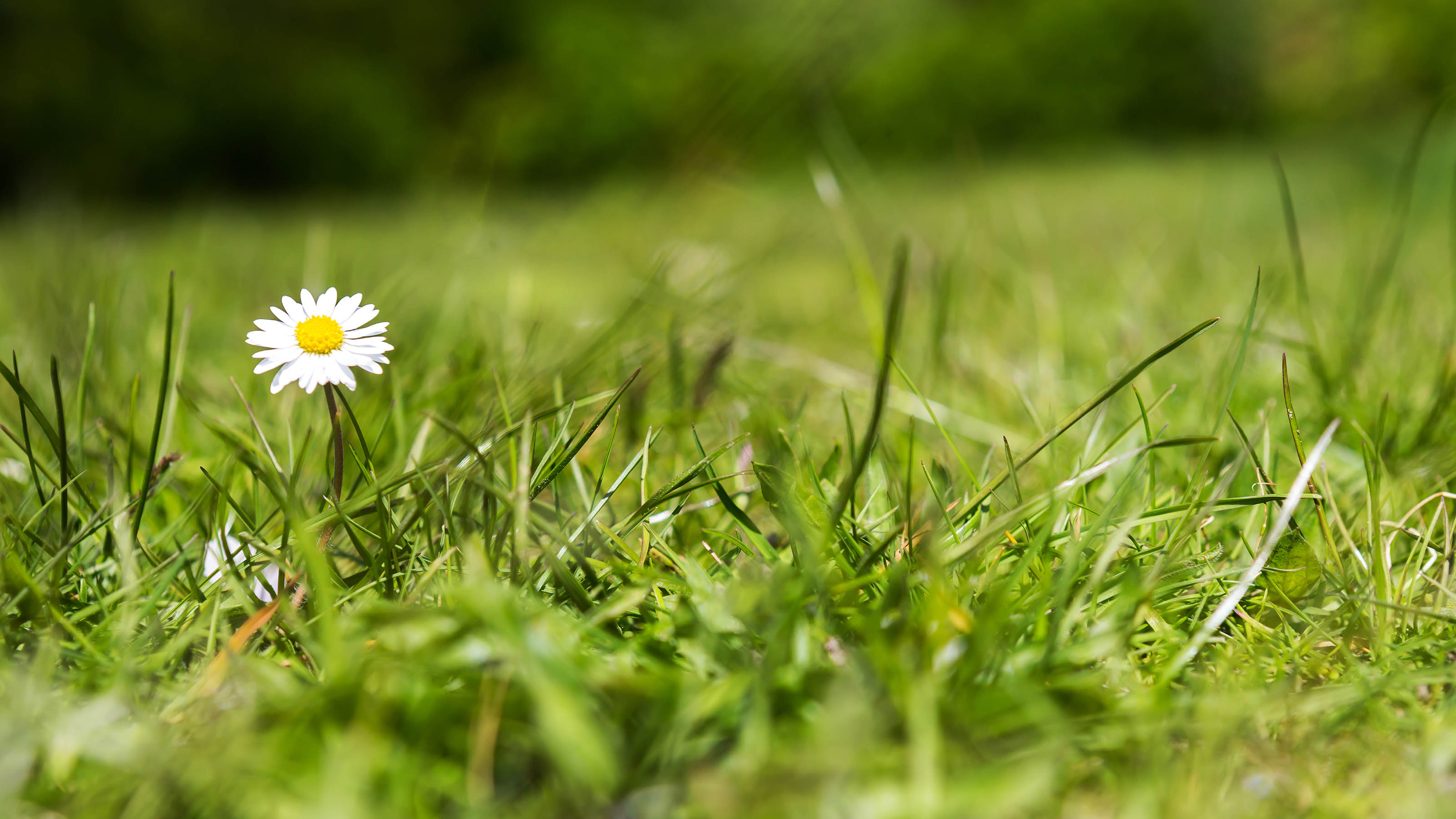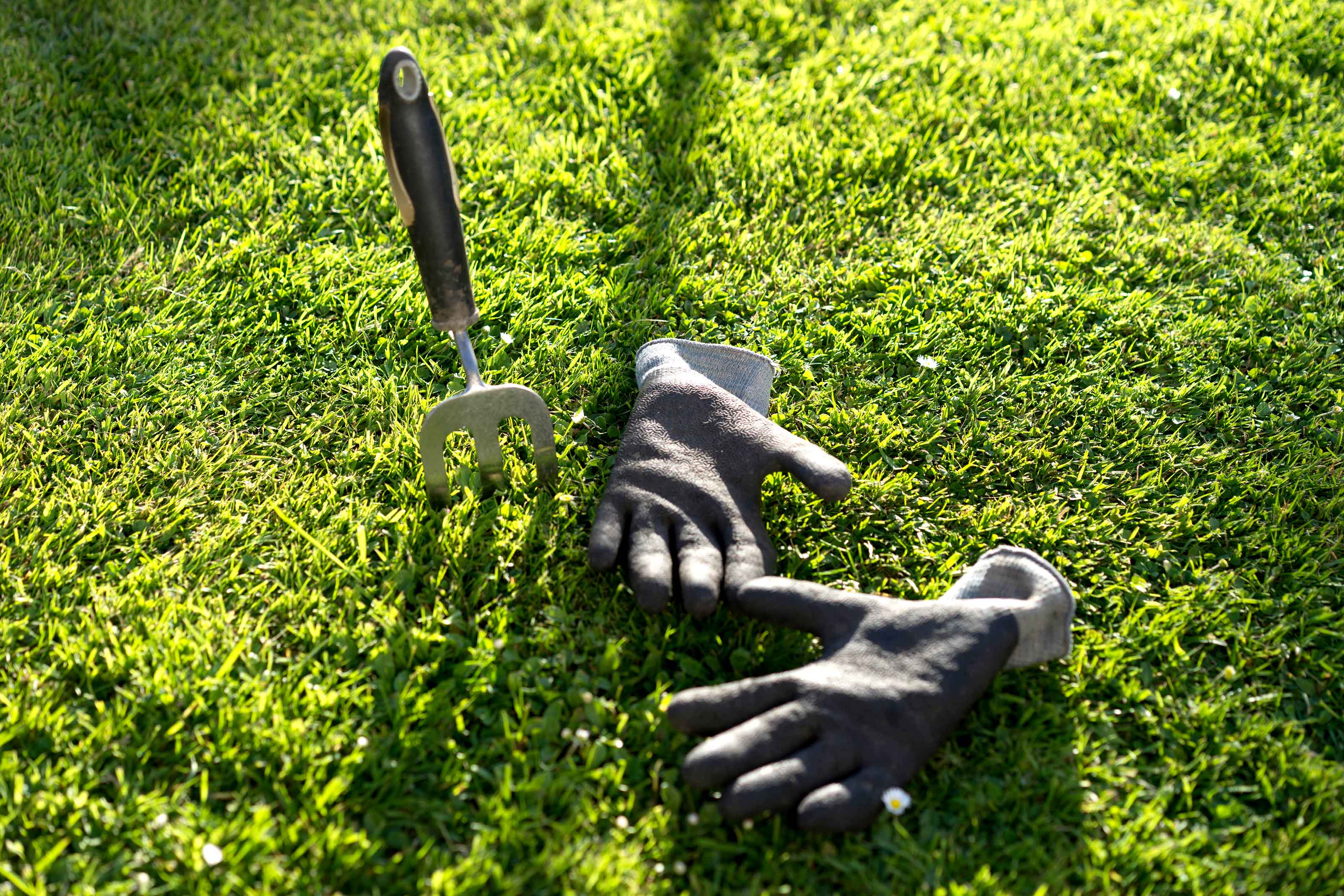How to get rid of lawn weeds: revamp your turf without killing the grass
Want to know how to get rid of lawn weeds? Rid your grass of dandelions, moss, clover and more with these tips


Do you need to know how to get rid of lawn weeds in your garden? After all, we all want to keep our prized patch of turf looking its best. So, knowing how to eradicate pesky intruders, without ruining the grass itself, is definitely worthwhile.
Even if your lawn ideas have been neglected and are looking worse-for-wear, there's no reason to give up all hope for a verdant stretch of green. There are also other, more natural means to try before dousing the lot in weed killer and hoping for the best.
But why do lawns get weeds in the first place? Well, as the team at Stihl explains, weeds are caused by a wide range of factors. These include lack of water, cutting too low, compacted soil, and even by using low-quality or contaminated grass seeds. It's worth remembering that grass needs to be healthy and strong to deter the likes of moss, clover, and dandelions, so looking after it properly will do it the world of good.
So, without further ado, find out how to get rid of lawn weeds with these simple steps. Your grass will be looking tip-top in no time.
7 tips on how to get rid of lawn weeds
1. Pick a good-quality grass seed

The first step to learning how to get rid of lawn weeds is to know the right seed mix to use
If you want to deter weeds from growing in your grass, the very first step of growing a lawn is crucial. And by that, we're talking about the seed mix that it's grown from.
Using a seed mix that's full of weeds is obviously not the best start for any lawn. This is why it's worth investing in the highest quality blend that you can afford. As the RHS says, cheaper mixes are often contaminated with weeds, or are even made up of course-textured ryegrass, which is actually meant for agricultural use.
Learn how to plant grass seed with our guide. Of course, this tip applies for when filling in bare patches too.
2. Dethatch your lawn once or twice a year

Want to know how to get rid of lawn weeds? Dethatching, or scarification, is an effective approach
The experts at Stihl say that whilst there are many chemical products available to help remove unwanted plants from lawns, many people don't realize that using a scarifier will also keep them at bay.
This process of scarification, or dethatching, will disrupt the weeds' growth, Stihl explains. Wait until you've done the first few mows of spring, and temperatures are at least 10 degrees Celsius (50°F). You can repeat the process in autumn, before the temperature drops too low.
You can do this with a scarifying rake, but go gently as not to remove too much of your turf. For larger lawns, you can try a petrol-powered tool such as the STIHL RL 540. Its seven double-sized blades have been specially designed to gently lift out any growth-inhibiting moss, thatch and flat-growing weeds to stimulate the turf, explains Stihl.
Whichever method you choose, the perforation of the soil's surface will also allow light, moisture and essential nutrients to be more easily absorbed by the grass roots' network, Stihl says. This results in 'lush, green growth and a healthier-looking lawn.'
Take a look at our guide on how to scarify a lawn to learn more.
3. Dig up weeds by hand

A small trowel will come in use for digging up weeds
Some weeds, such as dandelions, broad-leaved docks, and plantain, have long taproots. Pulling off the leaves unfortunately isn't enough to do the job – you'll need to dig up the full root to stop them from regrowing.
Use a small trowel to do so, and then, after removing larger weeds, level out the hole with compost before adding a sprinkling of fresh grass seed and a dose of water. You can also remove daisies and small clumps of clover by hand in this way (their shorter roots make them easier to pull up). However, for less formal gardens, you may wish to leave these flowery additions.
Remember that some weeds are more invasive than others, and can grow quickly from tiny fragments of root, to form new networks of rhizome. Couch grass is a particularly tricksy example and should be dealt with carefully. In extreme cases of couch grass infestation, a lawn may need to be stripped entirely for the weeds' roots to be completely removed, as says the RHS. Afterwards, the area can be re-turfed.
We have more weed control tips and tricks for your garden in our feature, as well as a Japanese knotweed guide.
4. Keep on top of mowing

Want to know how to get rid of lawn weeds? Frequent mowing, to the right length, will help
Knowing how to mow a lawn properly is a skill that most grass-owning-gardeners need to know.
One of the most important things to remember is to not cut it too short, or when it's frosted or wet, all of which can damage the turf. But mowing it in the right conditions, to the right height, will encourage strong, healthy grass. This will be better-equipped to out-grow weeds.
If your lawn is already speckled with the likes of creeping thistle or common ragwort, then regular mowing is also a good way to get rid of them.
Be sure to add a clippings bag or box to your best lawn mower before you start mowing. That way, you'll be less likely to spread the seeds around, which would only lead to further weed growth. Removing all the seeds and cutting back the plant again and again in this way will weaken the weeds and prevent them from setting new seeds. Eventually (patience is key to this one), your lawn will have much less weeds overall.
5. Strengthen the grass with balanced fertilizing and aeration

Establishing a healthy lawn is a crucial step for getting rid of weeds
The growth of weeds can signal a lack of nutrients in your lawn. For example, lesser trefoil and clover will thrive in poorer conditions, whereas grass will become weak. So, if you want less weeds, then it's a good idea to give your lawn some TLC. Remove as many weeds as possible first, and then apply a healthy dose of a suitable lawn fertilizer, following the instructions on the packet. The best time to do this is generally in late spring, and then again in autumn.
However, for the best results, aerate your lawn a day or so before you fertilize it. Aerating the soil will ensure that the nutrients can make their way deep down into the roots of the grass, increasing uptake. Some people choose to overseed their lawn after aerating too, which helps to establish dense, lush growth.
Aerating is simple – just wiggle a garden fork back and forth in the ground in straight lines up and down your plot, or use a specific aerator tool. This process also helps to break up compact soil and improve drainage, which again, is good for lawn health (and helps prevent the likes of moss and knotgrass from growing).
Looking for more advice? Our spring lawn care tips feature has plenty.
6. Check your lawn's pH

Dandelions will thrive in acidic soil
The presence of some weeds can signal that the pH in your soil needs to be addressed. For healthy lawns, aim for a level between 6.0 and 7.0.
You can buy testing kits to find out the conditions of your lawn. If the reading is way below 7.0, then chances are your soil is too acidic for your grass to flourish. What's more, weeds such as moss and dandelions thrive on acidic soils, so it's worth considering adding lime to your lawn to help neutralize it.
Above 7.0 and your lawn may be too alkaline, which again is not optimal for nutrient uptake. This can be rebalanced with the use of garden sulphur.
7. Use chemical measures, as a last resort
If your lawn feels completely overrun by weeds and nothing seems to be working, then you may wish to turn to herbicides as a very last resort. Such chemicals are no good for wildlife garden ideas, but can do the job quickly and effectively if used correctly. They usually fall into two categories – pre-emergent (which target germinating seeds – generally crabgrass and dandelions) and post-emergent (which target existing weeds).
Pick your weed killer very carefully, making sure to select one that is suitable for lawns. Some will kill every plant they make contact with, including your grass.
'Selective' herbicides will only target specific weeds, so are worth looking out for. There are also triple-action lawn treatments available, that aim to feed your lawn whilst killing moss and targeting weeds. Whichever you choose, application instructions vary so make sure you're certain on the correct approach for your chosen product before you begin, by reading the label thoroughly.
Will vinegar kill grass or just weeds?
When thinking about getting rid of lawn weeds, you may have heard of the old trick of using vinegar. Yes, many people have success with using it to kill weeds. However, it's a non-selective means and will destroy any plant it comes into contact with. Because of this, it's not a good idea to spray vinegar over your lawn weeds, for risk of damaging the actual turf.

The garden was always a big part of Holly's life growing up, as was the surrounding New Forest where she lived. Her appreciation for the great outdoors has only grown since then. She's been an allotment keeper, a professional gardener, and a botanical illustrator – plants are her passion.
